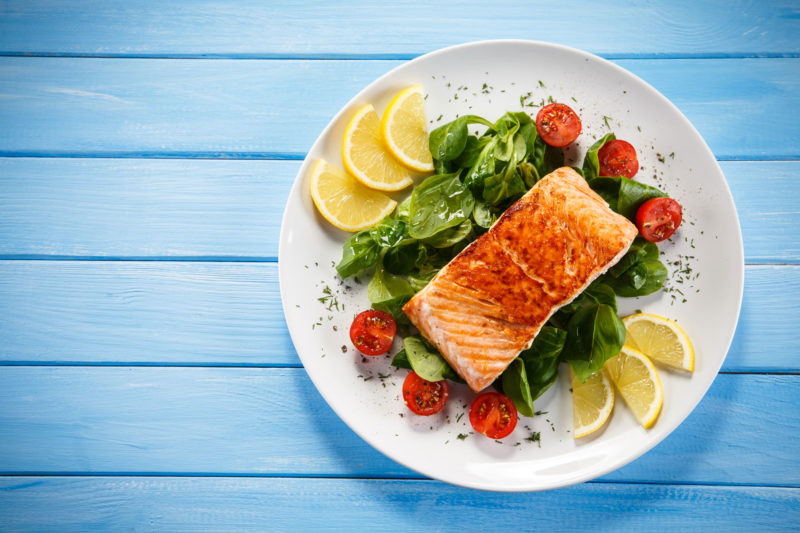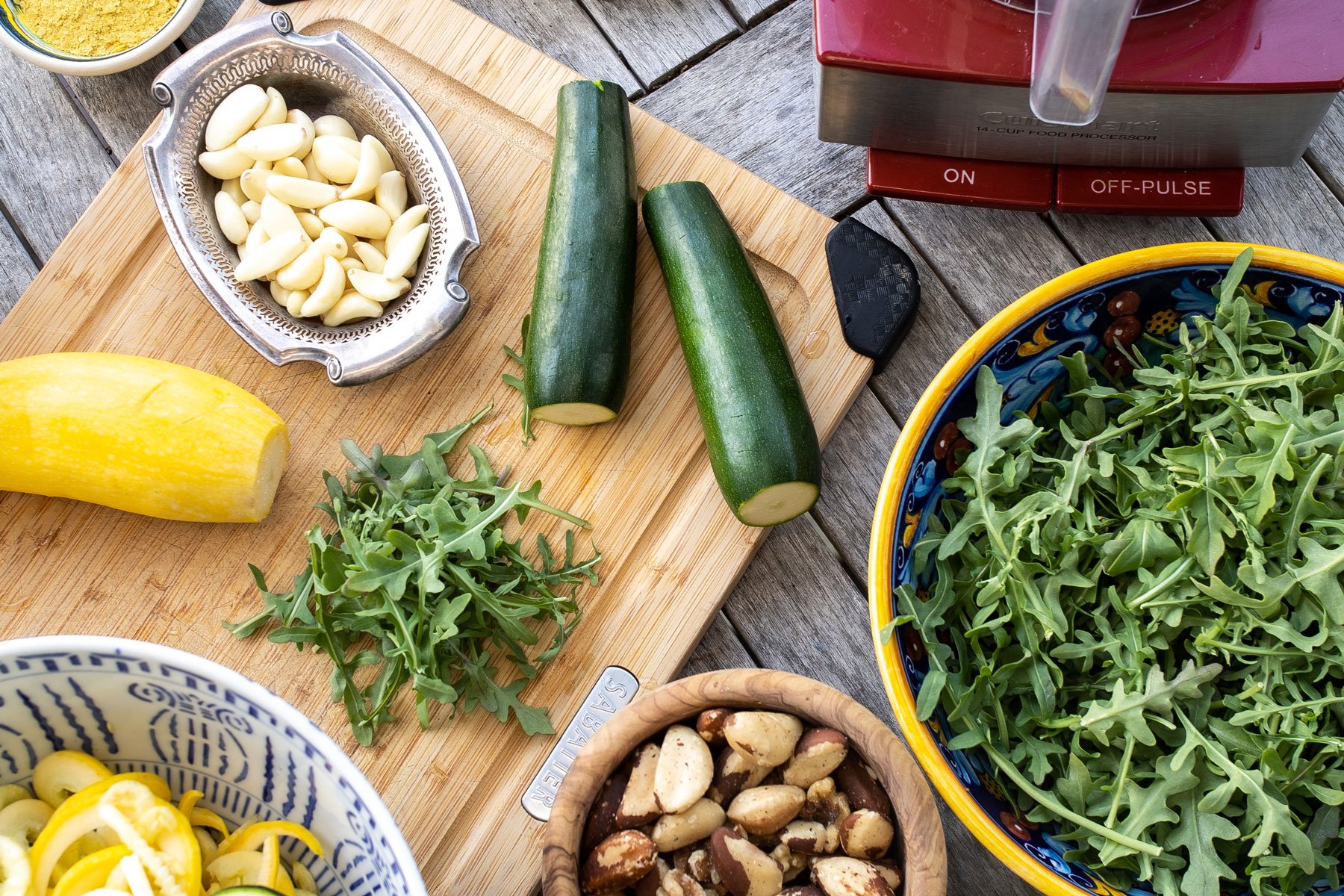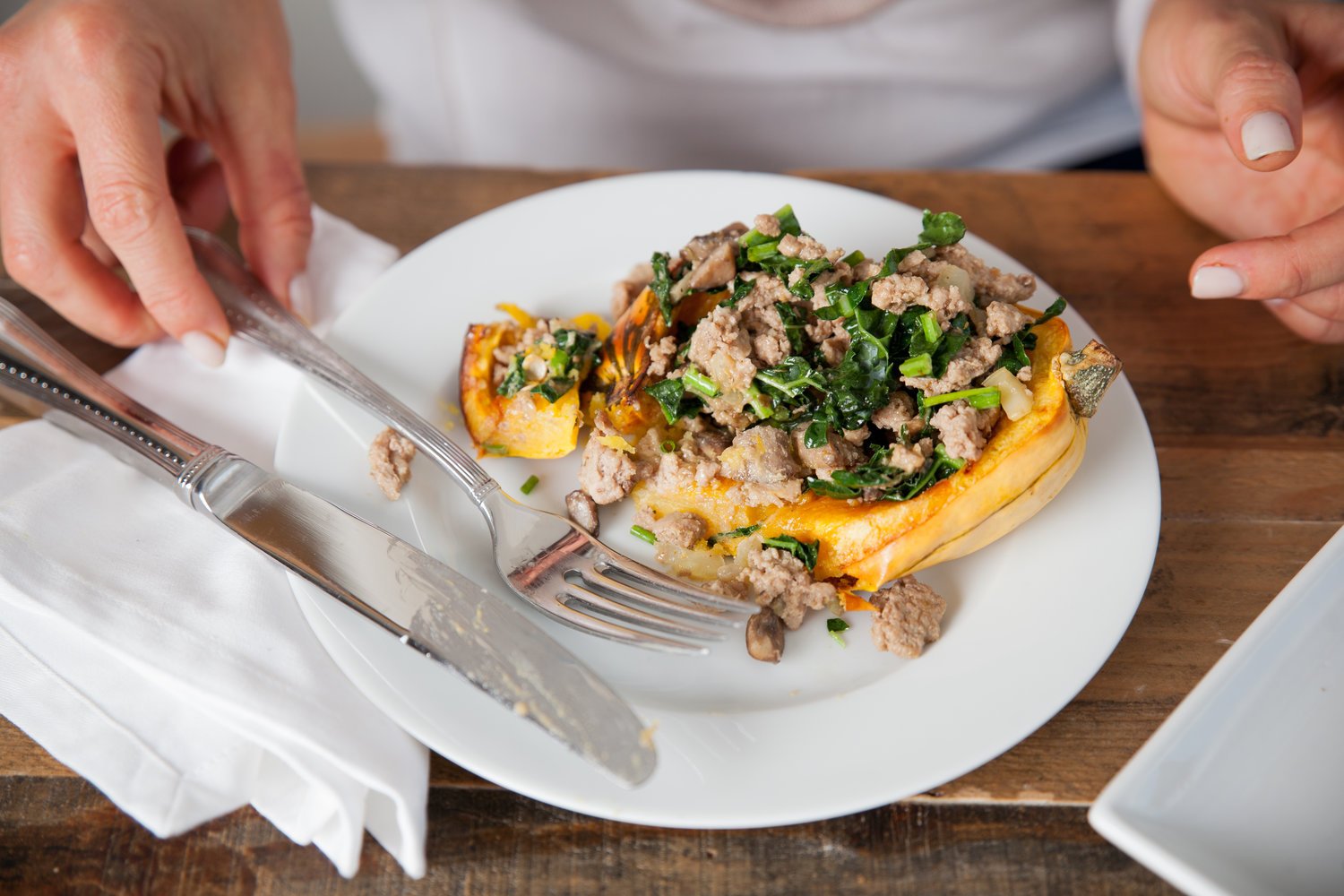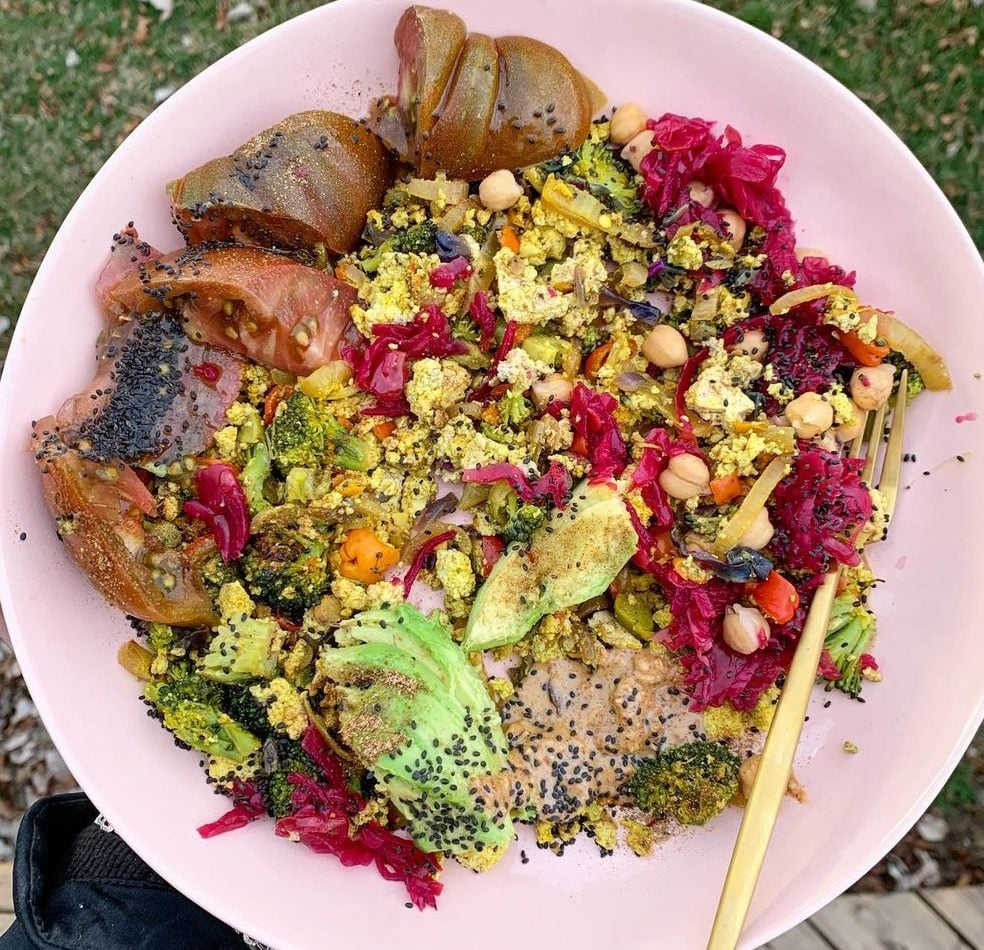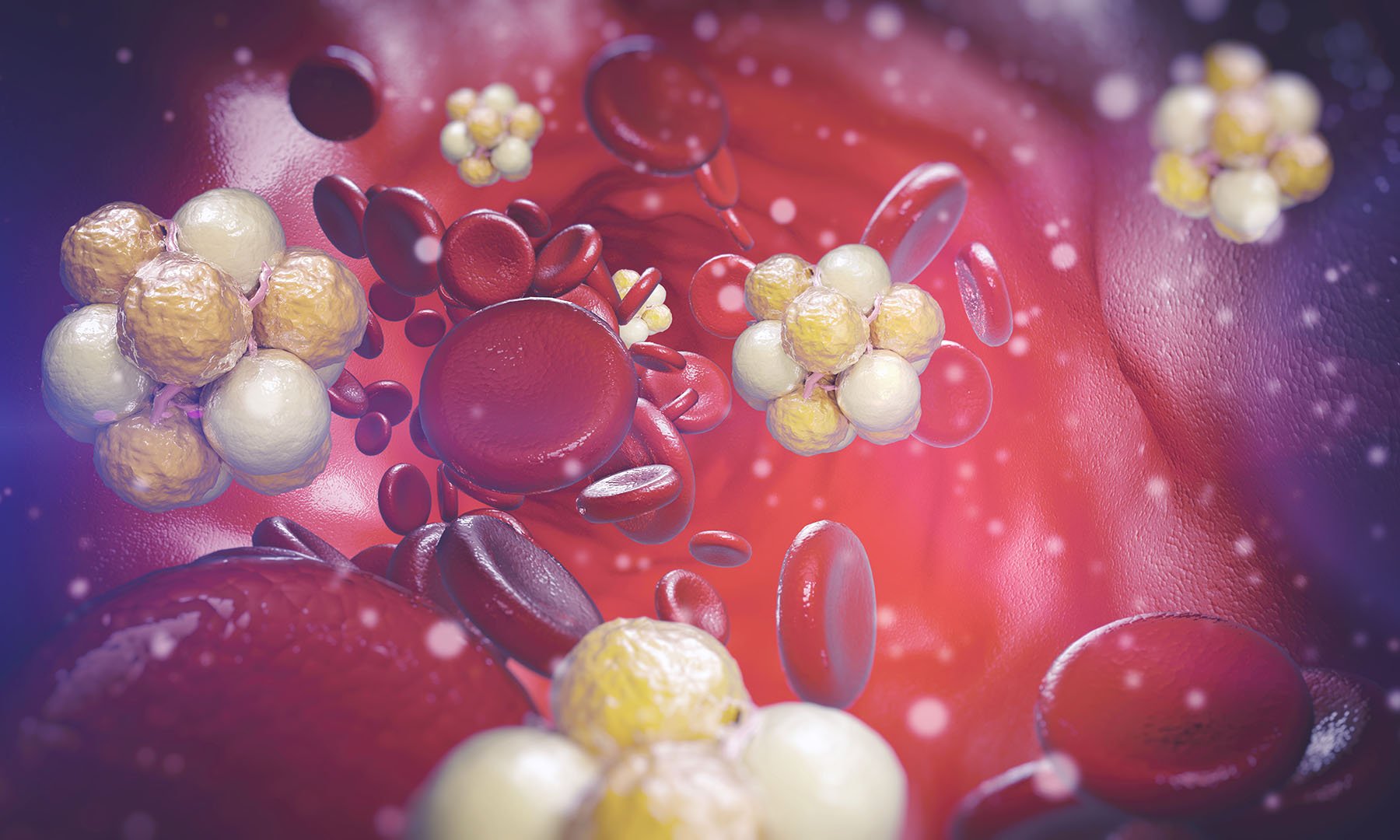Inflammation has been linked to a host of chronic health issues, including metabolic dysfunction, a condition in which the body’s machinery for using and processing energy doesn’t work as efficiently as it should. Metabolic disease can negatively impact how well your body breaks down the carbohydrates, fats, and proteins in the foods you eat and lead to health problems such as Type 2 diabetes. In addition to being a hallmark of metabolic disease, inflammation has also been implicated in other serious chronic conditions such as heart disease, stroke, and cancer.
Fortunately, you can take actions that reduce inflammation. “Diet is definitely one of the biggest factors that can affect inflammation and metabolic health overall,” says functional medicine and family medicine provider Ami Kapadia, MD, ABFM, ABIHM. Read on to learn how following a low-inflammation eating plan can benefit your health.
What is Inflammation?
Inflammation is your body’s response to a threat or irritant. When a cold makes your nose run or your finger is red and sore from a paper cut—that’s inflammation at work, helping you to recover. Your body sends out chemical mediators like histamine and bradykinin, which trigger the immune system to create an inflammatory response and bring white blood cells to the wound. And that’s a good thing. It’s also meant to be temporary, lasting only until the injury or infection is gone.
However, when the immune system keeps fighting—which can happen due to several factors, such as a poor diet, obesity, smoking, stress, and lack of sleep—inflammation doesn’t end. It becomes chronic, and it can cause serious health problems. By some estimates, the conditions that cause three out of every five deaths worldwide, such as stroke, cancer, and diabetes, have chronic inflammation as a component.
Related article:
How are Diet and Inflammation Connected?
Foods and eating patterns affect inflammation. We know that diet plays a role in inflammation and that the Western diet, in particular, may be a significant contributor. A 2019 review in the journal Immunity defines a Western diet as having lots of highly processed food products (including refined grains and meats like hot dogs and cold cuts), sugary drinks and fast food, and being low in fiber, vitamins, minerals, and antioxidants.
This type of diet tends to be high in calories and contains foods with a high glycemic index, which is likely to trigger a rapid rise in blood sugar levels. The result is that a Western diet “promotes rapid weight gain [when compared to] more balanced diets,” the Immunity researchers note. Excess body fat in and of itself is known to cause immune cells to produce proinflammatory chemicals. In addition, it can contribute to metabolic syndrome—a cluster of conditions that include high blood sugar, high blood pressure, and high cholesterol, and can contribute to diabetes, heart disease, and stroke. The study also points to evidence linking Western diets to elevated serum (blood) markers of inflammation, such as C-reactive protein (CRP), and shows that the immune system seems to respond directly to this type of eating pattern. CRP is released into the bloodstream by the liver during an inflammatory response, so it is a chemical sign of inflammation in the body and is one of the core metrics in diagnosing inflammatory diseases.
How does a Western diet trigger inflammation? There are a number of ways. Individual foods and food groups can have an impact. For example, eating lots of sugar and other ultra-refined carbs cause blood sugar spikes—and that rapid rise has been linked to elevated levels of CRP. (Over time, that inflammation can worsen insulin resistance, a root cause of metabolic dysfunction, creating a vicious cycle.) Red meat, on the other hand, may increase inflammation by altering gut bacteria.
A lot of recent research, however, has looked at how the Western diet as a whole can lead to inflammation. After all, people don’t just consume individual foods, and it’s known that the vitamins, nutrients, and other components of foods can interact with each other. So looking at an overall pattern makes sense.
“I’ve seen patients with problems like irritable bowel syndrome, skin issues, certain autoimmune diseases, metabolic syndrome, anxiety, depression, joint and muscle pain, headaches, and fatigue, who improve with an anti-inflammatory diet.” – Dr. Ami Kapadia.
Studies have shown that a Western diet high in ultra-refined carbs and saturated fat signals the body’s cells to release a host of chemicals, enzymes, and molecules called reactive oxygen species (ROS) that set off an inflammatory response. Too many ROS can lead to oxidative stress, a condition in which there is an imbalance in the body of antioxidants, compounds that protect against one type of cell damage, and free radicals, substances that can damage cells. Oxidative stress can lead to inflammation, and inflammation can, in turn, worsen oxidative stress. ROS often accompany infections or tissue damage, which spur an inflammatory response. However, this process can create a flywheel of dysfunction as more inflammation leads to more inflammatory chemicals.
What We Know about Low-Inflammation Diets
On the flip side, a healthy diet can help reduce inflammation, Dr. Kapadia says. “A diet where you’re building your plate around vegetables and adding in other whole foods like fish, whole grains, fruits, nuts and seeds, and healthy fats can go a long way toward lowering inflammation,” she says.
A 2019 review in the journal Disease Markers found that a Mediterranean-style diet rich in whole grains, fruits and vegetables, lean protein, and healthy fats (including omega-3 fatty acids) was anti-inflammatory. The researchers note that high amounts of fiber and antioxidants can improve inflammation and that a Mediterranean-style diet is high in fiber. That fiber may improve gut health—upping the healthy bacteria in your microbiome and reducing the unhealthy ones.
According to an Italian study, after one year on a Mediterranean diet, CRP levels dropped 37% among participants with Type 2 diabetes, indicating its anti-inflammatory potential.
There’s also new evidence that the DASH diet (Dietary Approaches to Stop Hypertension) may be anti-inflammatory as well. Like some Mediterranean-style diets, this is a plant-forward plan, and the specific diet used in this study also called for limiting sodium to see if doing so would be beneficial. The study found that people on the DASH diet lowered their CRP by 13% regardless of sodium intake.
What is the Best Anti-Inflammatory Diet?
There is no single best anti-inflammatory diet that works for everyone, but there are some crucial steps you can take to help fight inflammation, studies show:
- Eat plenty of fruits and vegetables. Recommendations vary for exactly how much produce to eat to control inflammation, but about 5 servings daily seems to best protect health, research shows. Variety is key, too. The wider the range of fruits and vegetables you eat, the broader range of antioxidants you’ll get. That’s important because research has found that dietary intake of antioxidants can reduce free radicals—those molecules in the body that can lead to cell damage and inflammation.
- Avoid all added sugars and keep sugar consumption as low as possible. In excess, sugar can trigger an inflammatory response. And when people lower the number of sweets in their diet—such as sugar-sweetened beverages—levels of inflammation also drop. Keep in mind, “natural” sugars like honey, coconut sugar, and agave, to name a few, also have adverse effects on blood glucose and metabolic health, so we advise skipping these too. You can also swap for natural sweeteners like allulose and monk fruit.
- Avoid foods made with refined grains, such as bread, crackers, cereals, white rice, and cookies. Grain-based foods cause significant blood sugar spikes that can lead to inflammation. Instead, choose options made with nut flours, or better yet, swap for whole food substitutes. For example, make chia pudding instead of oatmeal, use butter lettuce leaves instead of bread on your sandwich, and choose cauliflower rice instead of rice.
- Favor a diet rich in omega-3-rich fish such as salmon. Omega-3s have been found to alter gut bacteria for the better and increase the production of anti-inflammatory compounds that prevent and reduce inflammation. “When digestive bacteria are out of balance, this can cause a condition called dysbiosis that leads to inflammation. Healthy foods like those rich in omega-3s help improve the health of the microbiome,” Dr. Kapadia explains.
- Avoid fried foods. The process of frying at high temperatures can lead to increased ROS and inflammation.
- Drink alcohol in moderation. Excessive alcohol consumption has been linked to higher levels of inflammation. One reason is that when your body breaks down large amounts of alcohol, it produces ROS. Plus, alcohol causes the bacteria in your gut to release molecules into the bloodstream that can mimic a bacterial infection and, in turn, can create an inflammatory response. When you drink too much or too often, this acute inflammation can become chronic.
In addition, there’s plenty of evidence that specific foods may have more potent anti-inflammatory powers than others. In fact, scientists have created a Dietary Inflammation Index (DII) that ranks various foods, nutrients, and specific compounds found in foods according to how beneficial—or not—they are. For example, those high in vitamins A, C, and E, fiber, omega-3s, and magnesium have been associated with lower levels of inflammation.
A 2021 review published in the Journal of Nutritional Biochemistry concluded that polyphenols, a potent type of antioxidant that can combat oxidative stress, can also tamp down inflammation.
11 Foods to Include in a Low-Inflammation Diet
No single food will single-handedly fight inflammation—best to aim for an overall healthy diet. But some have been found to have notable anti-inflammatory effects:
- Fish rich in omega-3s, such as salmon and sardines. Your body uses these fatty acids to make compounds called resolvins and protectins, which have been shown to have anti-inflammatory effects and enhance insulin sensitivity, improving blood sugar levels. And a review of two observational studies with thousands of patients suggests that people who consume a healthy diet rich in fatty fish have lower levels of CRP.
- Beans and legumes, such as black beans, lentils, and peas. In one study, men who increased the amount of legumes in their diet saw improved markers of inflammation. Beans are known to have antioxidants known as isoflavones, substances that have an anti-inflammatory effect on the body’s cells—as well as the fact that they’re high in fiber, which also reduces inflammation.
- Nuts and seeds, such as almonds, walnuts, and chia seeds. These contain omega-3s and fiber, both of which reduce inflammation. A study published in the American Journal of Clinical Nutrition found that participants who reported eating at least 5 servings of nuts a week had significantly lower levels of CRP as well as another marker of inflammation called interleukin 6 than those who rarely or never ate them. Additionally, the researchers discovered that people who replaced 3 servings a week of red or processed meat, refined grains, or other processed foods with 3 servings of nuts saw a drop in markers of inflammation.
- Olive oil. A compound found in this heart-healthy fat, called oleocanthal, has anti-inflammatory effects similar to those of NSAIDs—medications like ibuprofen that are used to treat symptoms of inflammation in the body. Oleocanthal is an antioxidant that appears to inhibit the production of enzymes that trigger pain, swelling, and other signs of inflammation in particular types of cells.
- Spices, such as turmeric, cinnamon, and ginger. In one recent randomized controlled trial at Penn State University, researchers tested a blend of cinnamon, ginger, turmeric, basil, bay leaf, black pepper, coriander, cumin, oregano, parsley, red pepper, rosemary, and thyme—all of which have anti-inflammatory properties. In the study, men who were overweight or obese ate three different versions of a meal high in saturated fat and carbohydrates: One had 6 grams of the spice blend added to it; another had 2 grams of the spice blend; and a third had no added spices. The researchers drew blood samples before and after each meal. They discovered that the men had significantly lower levels of inflammatory markers after eating the meal with 6 grams of the spice blend. While the mechanism for reducing inflammation is not understood for all of these spices, in the case of turmeric, research shows that a compound it contains, called curcumin, has potent anti-inflammatory effects.
- Garlic. A study published in the Journal of Immunology Research concluded that the various compounds found in garlic modulate the release of inflammatory cytokines, reducing inflammation.
- Leafy greens, like spinach and collard greens. These vegetables contain several antioxidants, including beta-carotene, that help keep inflammation in check by mitigating oxidative stress. In a study published in the American Journal of Lifestyle Medicine, researchers had participants adopt a diet rich in leafy greens. After just 6 months, their blood levels of CRP had dropped significantly—from an average of 7 to 1.75 mg/L.
- Green tea. A substance called epigallocatechin-3-gallate (EGCG) in green tea appears to suppress inflammatory enzymes in the body.
- Broccoli. This cruciferous vegetable is high in an antioxidant called sulforaphane, which lowers levels of several molecules, including cytokines known to cause inflammation.
- Tomatoes. Not only are they rich in antioxidants like vitamin C, but tomatoes also contain lycopene, a compound that may help lower inflammation by squelching oxidative stress.
- Berries, such as blueberries, strawberries, and raspberries. These contain several bioactive compounds—including anthocyanins, other flavonoids, and vitamin C—that work independently and in conjunction to tame inflammation by fighting free radicals in the body. They’re also high in fiber—an anti-inflammatory bonus that helps blunt their impact on blood sugar levels. (Learn more about the best and worst fruits for blood sugar here.)
Related article:
Can a low-inflammation diet improve chronic health problems?
A growing body of evidence suggests that it can. “I’ve seen patients with problems like irritable bowel syndrome, skin issues, certain autoimmune diseases, metabolic syndrome, anxiety, depression, joint and muscle pain, headaches, and fatigue, who improve with an anti-inflammatory diet,” says Dr. Kapadia.
Research finds that following a healthy anti-inflammatory diet may benefit several other conditions, including asthma; eosinophilic esophagitis, a condition in which an allergic reaction prevents the esophagus from contracting properly; rheumatoid arthritis; Hashimoto’s disease; and psoriasis.
Can anyone benefit from a low-inflammation diet?
Yes. Research shows that adhering to a Mediterranean-style, low-inflammation diet reduces the risk for many chronic conditions, including heart disease, cancer, and premature death from any cause. It may also lower your odds of developing Alzheimer’s.
The takeaway
While studies have found specific foods to have anti-inflammatory powers that may, in turn, improve insulin sensitivity and reduce the risk for chronic ailments such as Type 2 diabetes, heart disease, and cancer, a healthy eating pattern overall, like the Mediterranean or DASH diet, could be more effective for keeping inflammation at bay. “It’s one of the foundational things I talk to patients about,” says Dr. Kapadia. “Often, medical professionals (including myself!) can be tempted to jump to therapeutic options like supplements or pharmaceuticals. But, I’ve learned that if you don’t start with the basics, you’re missing the boat. And of those basics includes an anti-inflammatory diet.”
